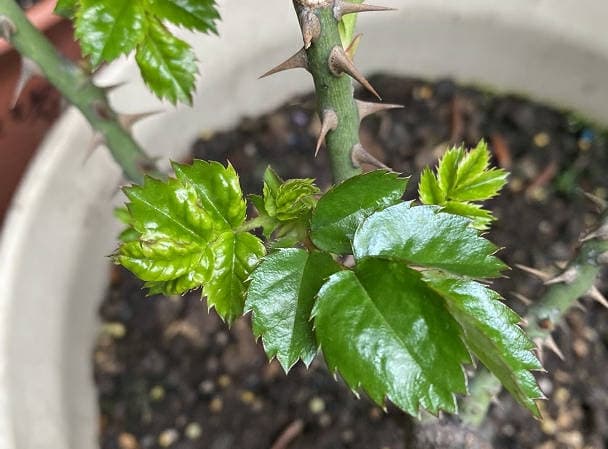Fix Rose Bud Splitting: 4 Causes & Solutions
With the arrival of May, roses in the garden compete to bloom and become the most eye-catching scenery. However, many florists find that the buds of their roses are cracked, deformed or even unable to open properly. What exactly is the cause of these problems? This article will provide you with a detailed analysis and practical solutions.

The four main reasons for rose bud cracking

1. Sudden increase in water content leads to physiological cracking.
Roses need sufficient water and nutrients during the bud development period, but if they are in a drought for a long time and then suddenly encounter continuous rainfall, the plant may be “maladaptive” due to the surge of water. At this point, the internal hormonal regulation of the plant is out of balance and the buds expand rapidly, eventually leading to cracking.
Similar phenomenon:
- Fruit trees (e.g. peaches, plums) often crack during the rainy season.
- Figs are also prone to cracking after continuous rainfall.
Solution:
- Maintain balanced watering and avoid sudden and large water replenishment after a long period of soil drought.
- Before the onset of the rainy season, organic fertilizer can be increased appropriately to improve the plant’s resilience.

2. Extreme weather effects
Temperature fluctuations this spring, high and low climate so that roses “do not know what to do” – should continue to grow, or temporarily dormant? Coupled with the stimulation of fertilizers and water, the development of buds may be affected, resulting in cracks or deformities.
Solution:
- Keep an eye on the weather forecast and cut back on fertilizers until extreme weather (such as sudden cooling or high temperatures) arrives.
- Use shade nets or windbreaks to reduce the impact of sudden environmental changes on the plant.
3. Calcium deficiency leading to developmental abnormalities
Calcium is essential for the stability of plant cell walls. If only nitrogen, phosphorus and potassium compound fertilizers (e.g. ternary compound fertilizers) are applied for a long period of time, while neglecting micronutrient supplementation, potted roses may suffer from calcium-deficient bloom cracking.
Solution:
- Regularly supplement trace elements water-soluble fertilizer (such as calcium and magnesium fertilizer), which can be irrigated or sprayed on the foliage.
- Use rotted organic fertilizers (e.g. earthworm manure, bone meal) to increase the calcium content in the soil.

4. Disease and pest infestation
After pests such as aphids, thrips and leaf miner flies nibble the buds, the damaged parts may continue to grow and eventually lead to cracking. In addition, fungal infections (e.g. gray mold) can also affect the normal development of the buds.
Solution:
- Prevention first: spray broad-spectrum insecticides (e.g. imidacloprid) and fungicides (e.g. carbendazim) in early spring.
- Timely treatment: Remove the affected flower buds as soon as the infestation is detected, and use targeted medication (e.g. abamectin to control leaf miner).
Special reminder: this year’s pests and diseases are particularly serious!
Because last year was a warm winter, this year’s rose pests and diseases (such as leaf miner flies) are more rampant than in previous years. Suggestion to flower lovers:
- Spray regularly for prevention (once every 10-15 days)
- Prune diseased and weak branches in time to reduce the breeding of insect pests
- Enhance ventilation to reduce the risk of fungal infection
If you want to know more rose care tips, you can refer to the professional book “Raising Exploding Roses from Scratch”, which analyzes in detail the causes and countermeasures of various abnormal problems.





